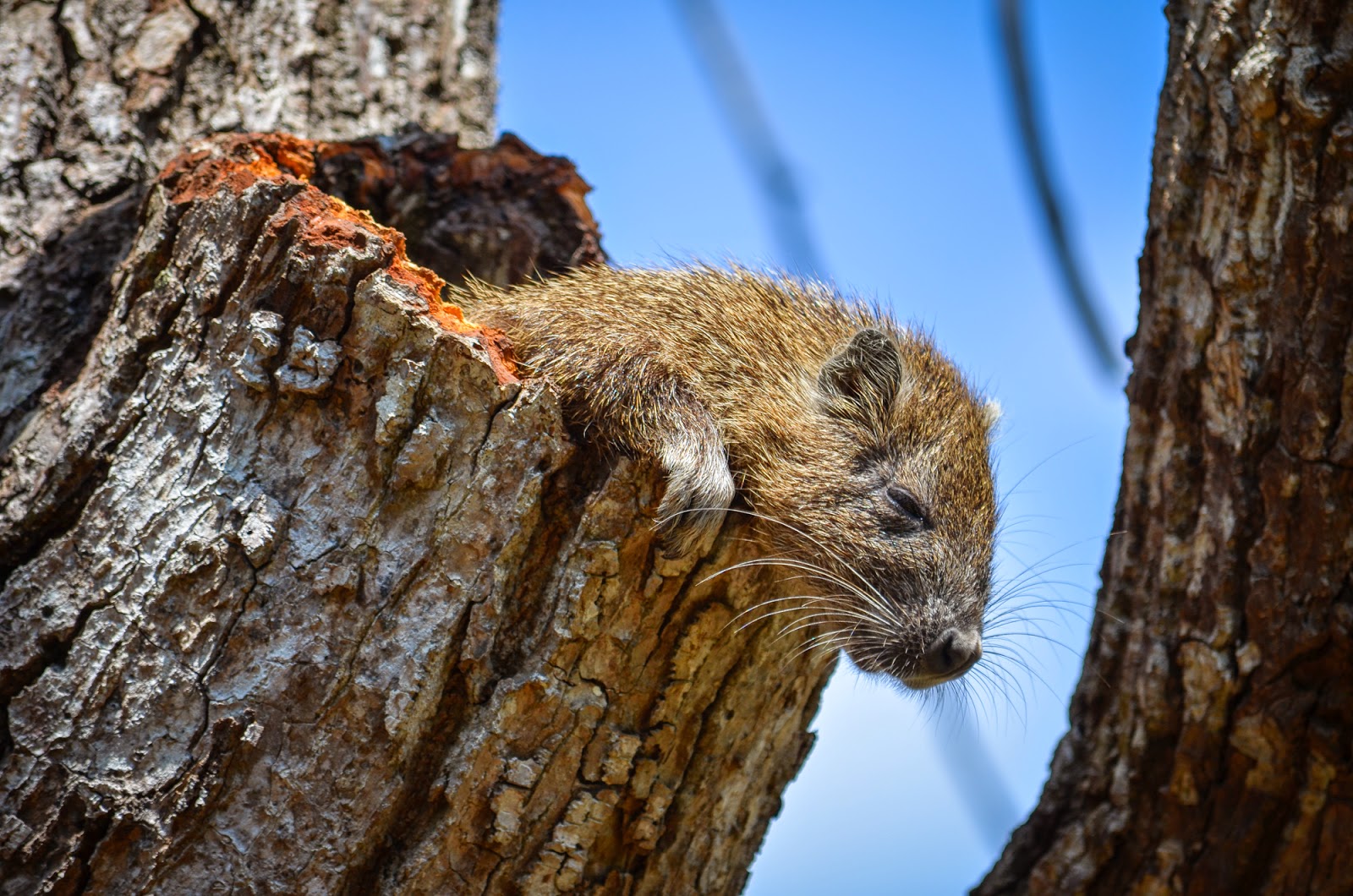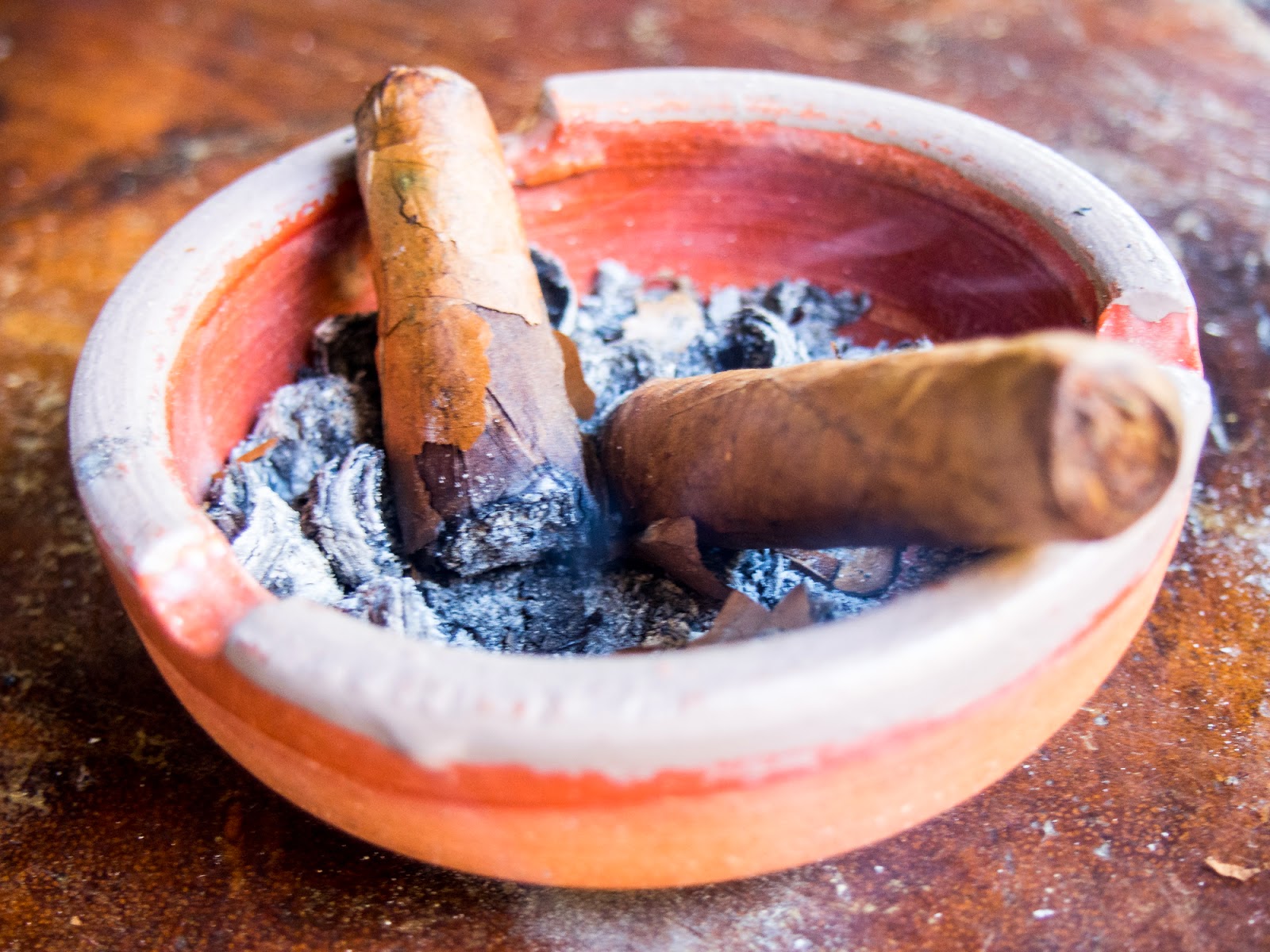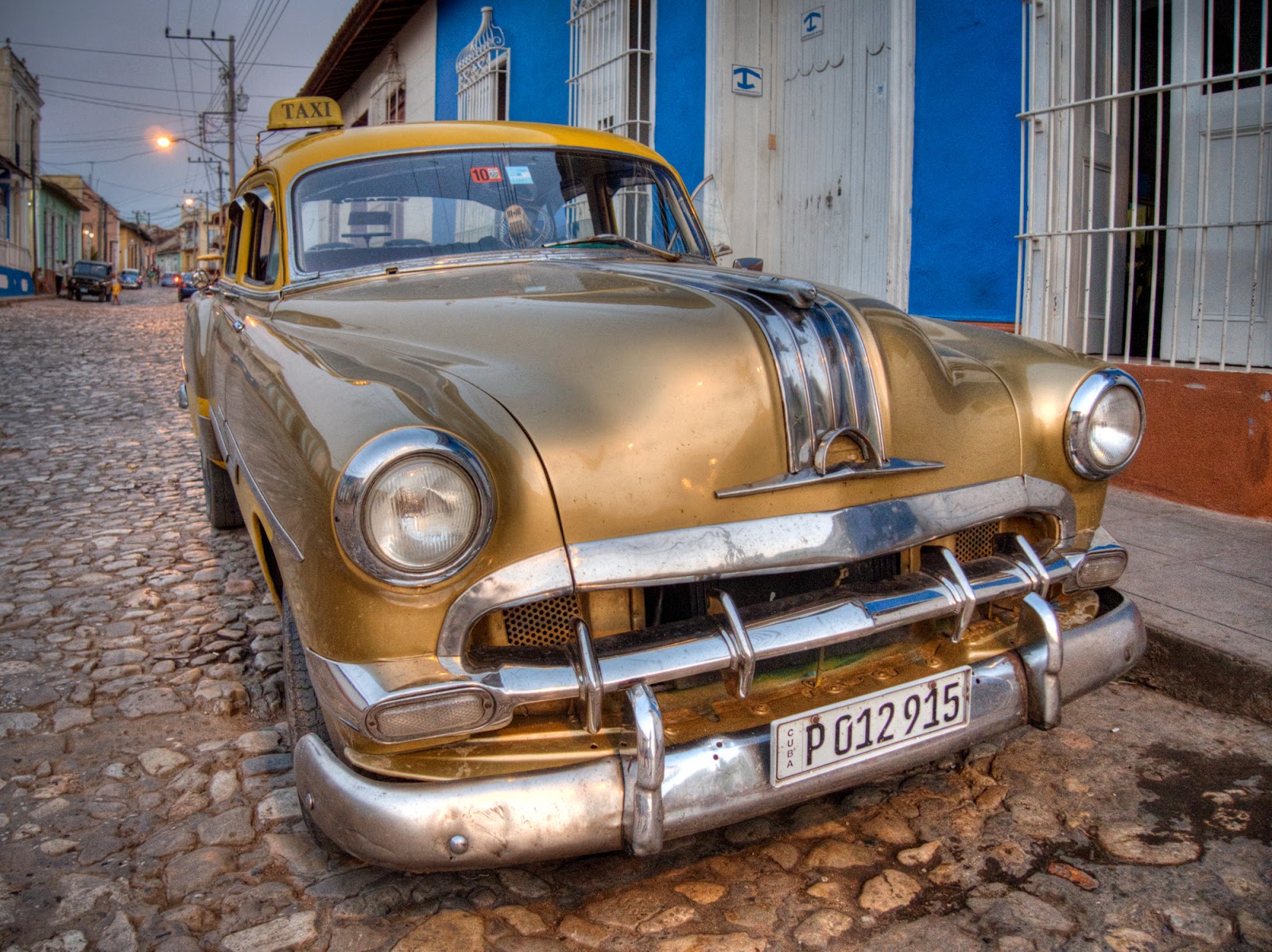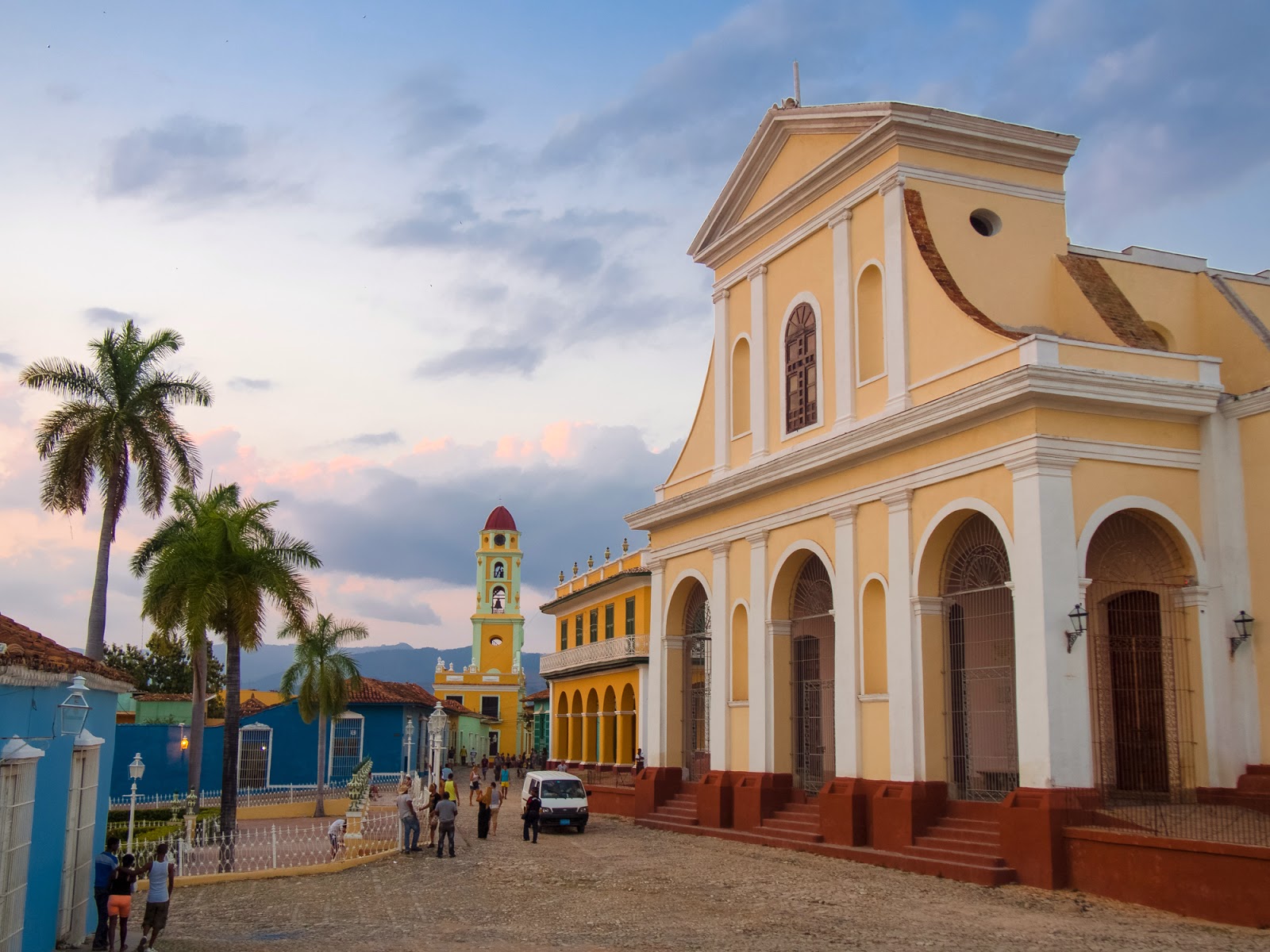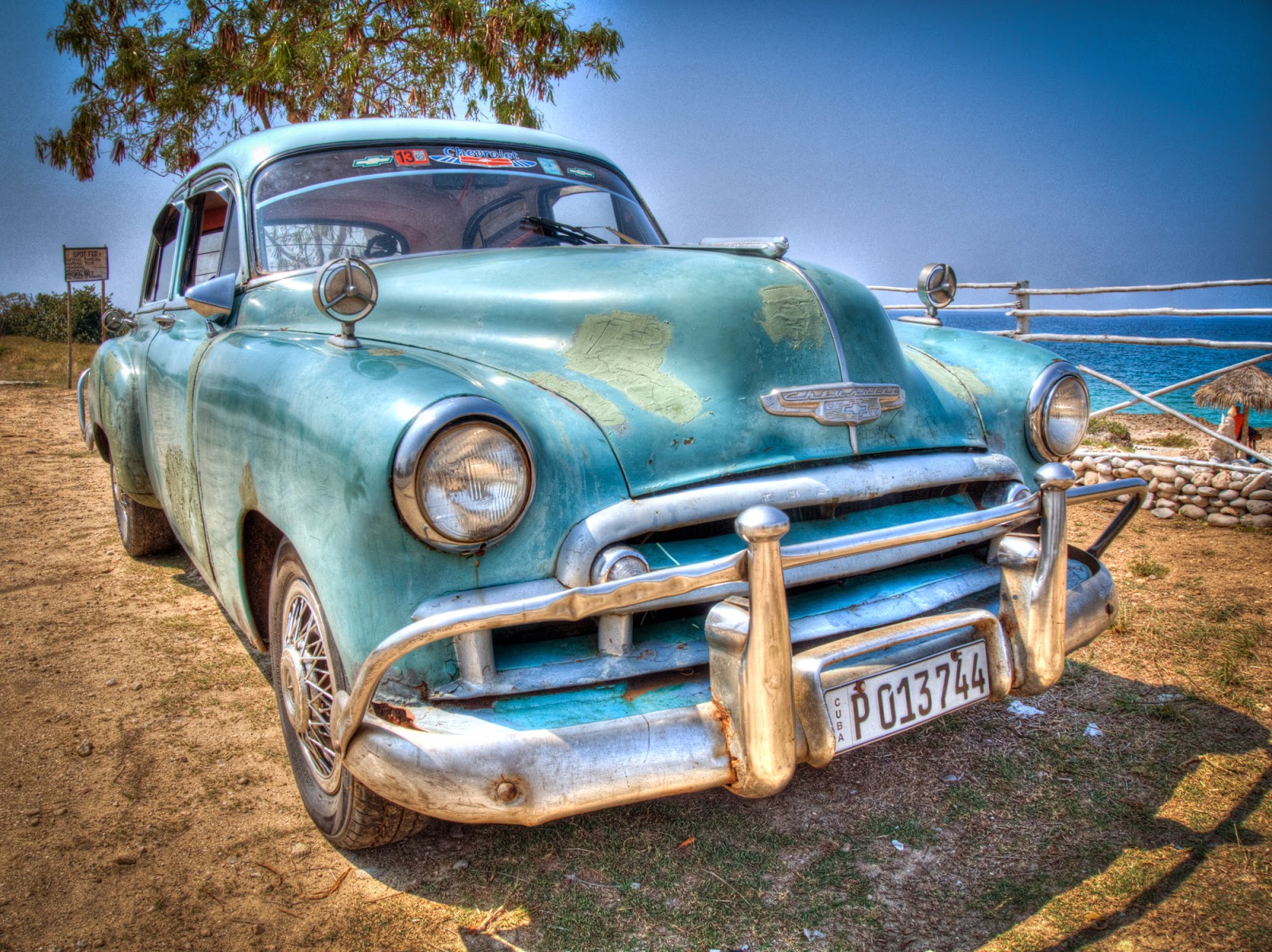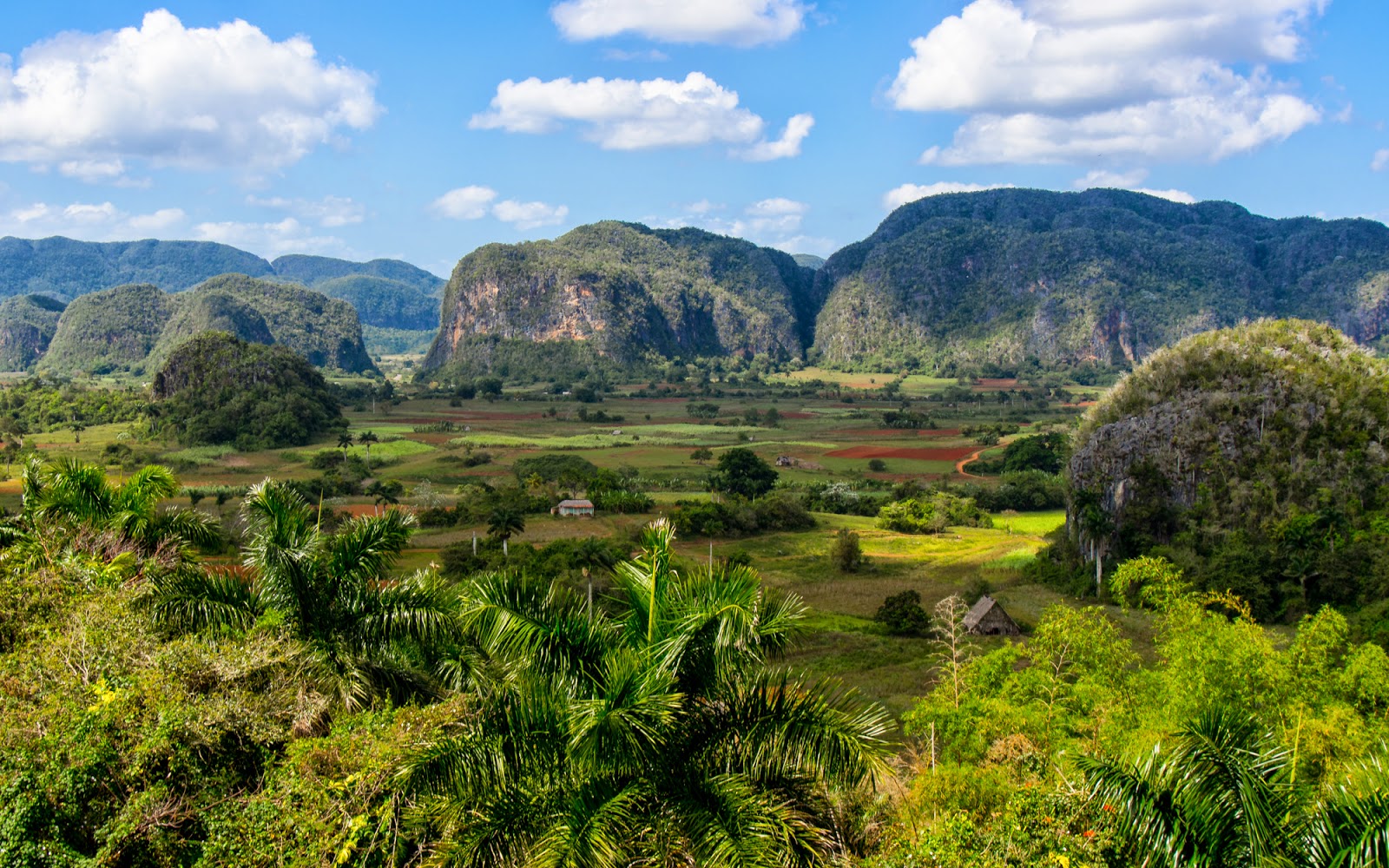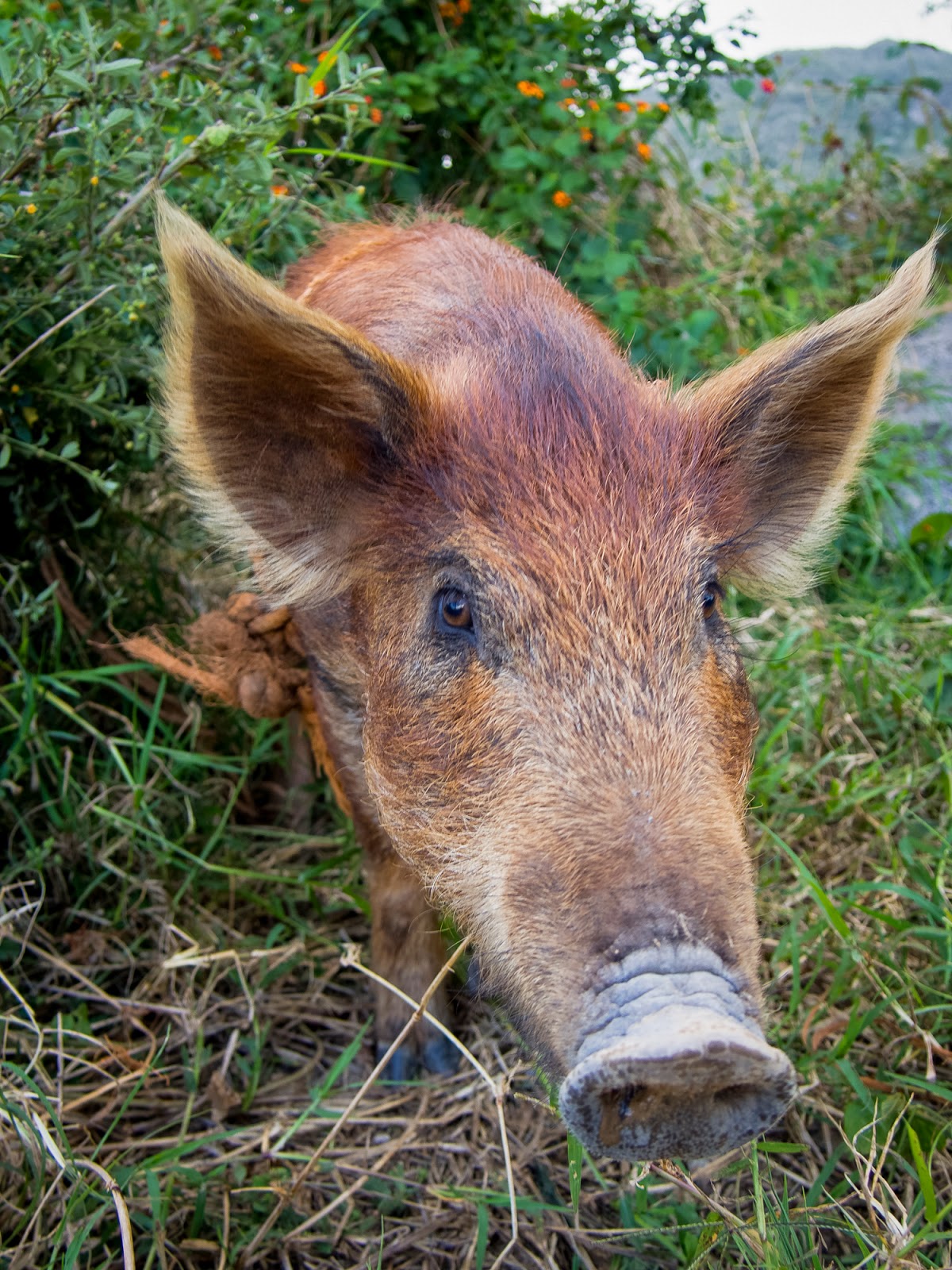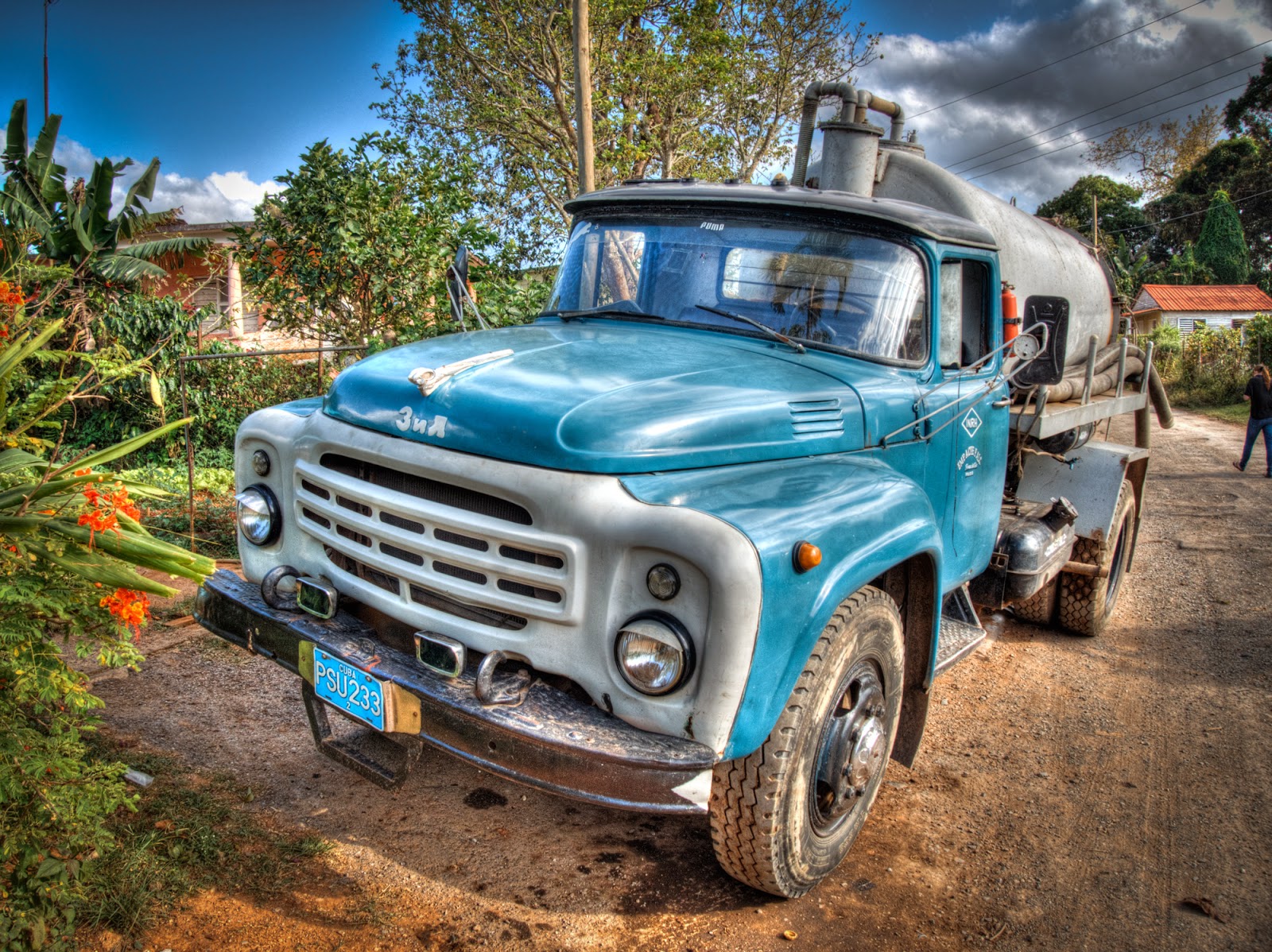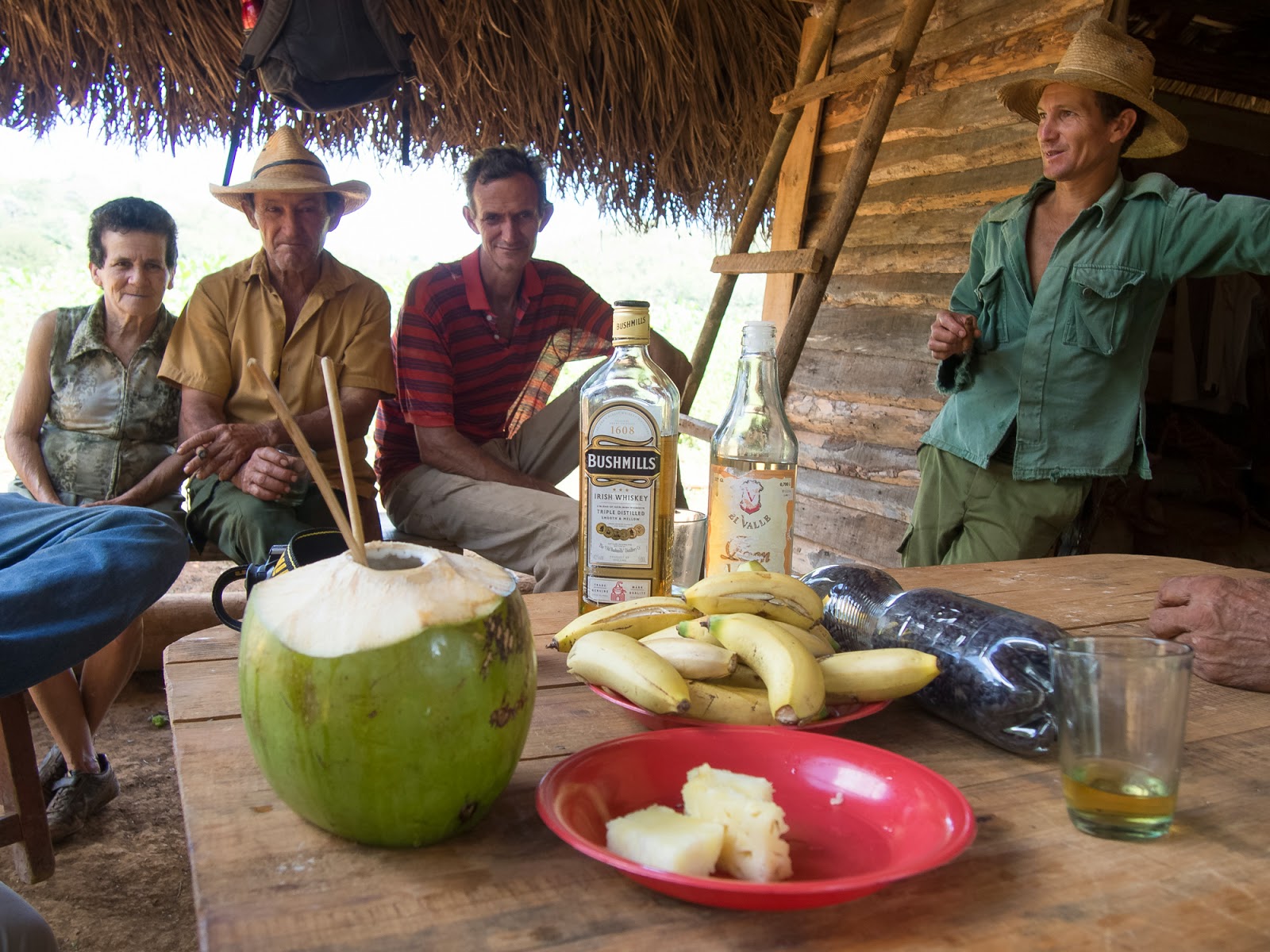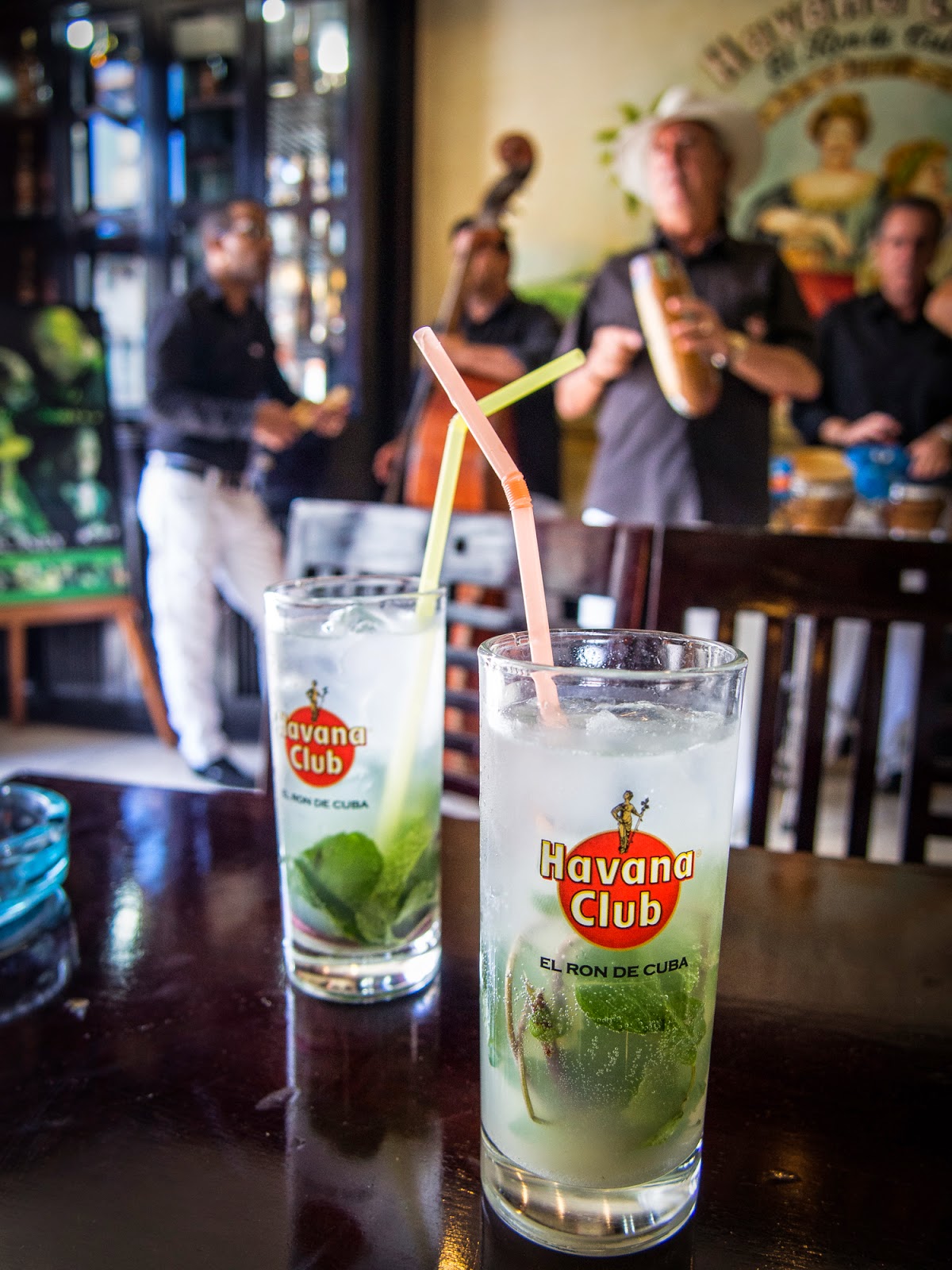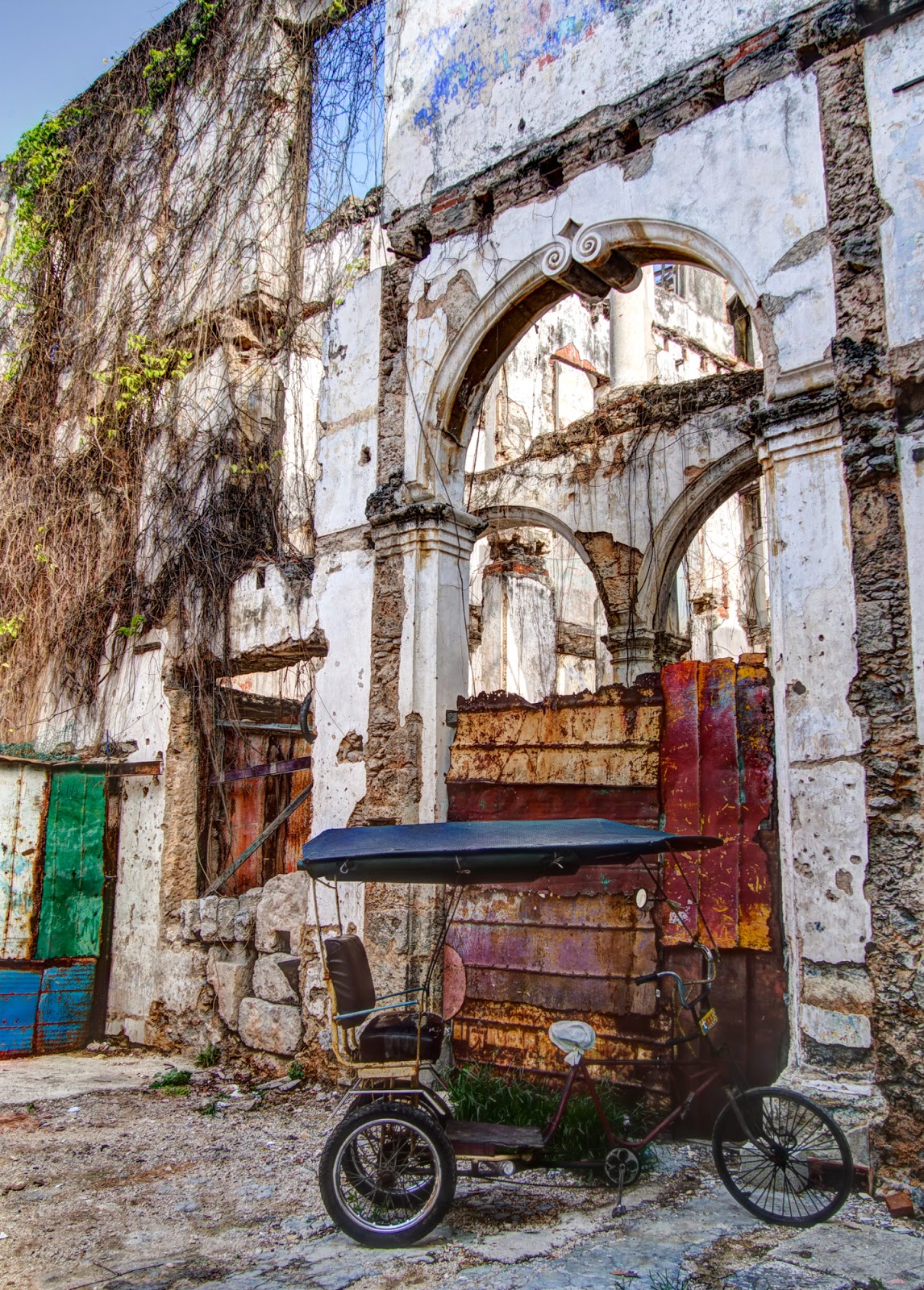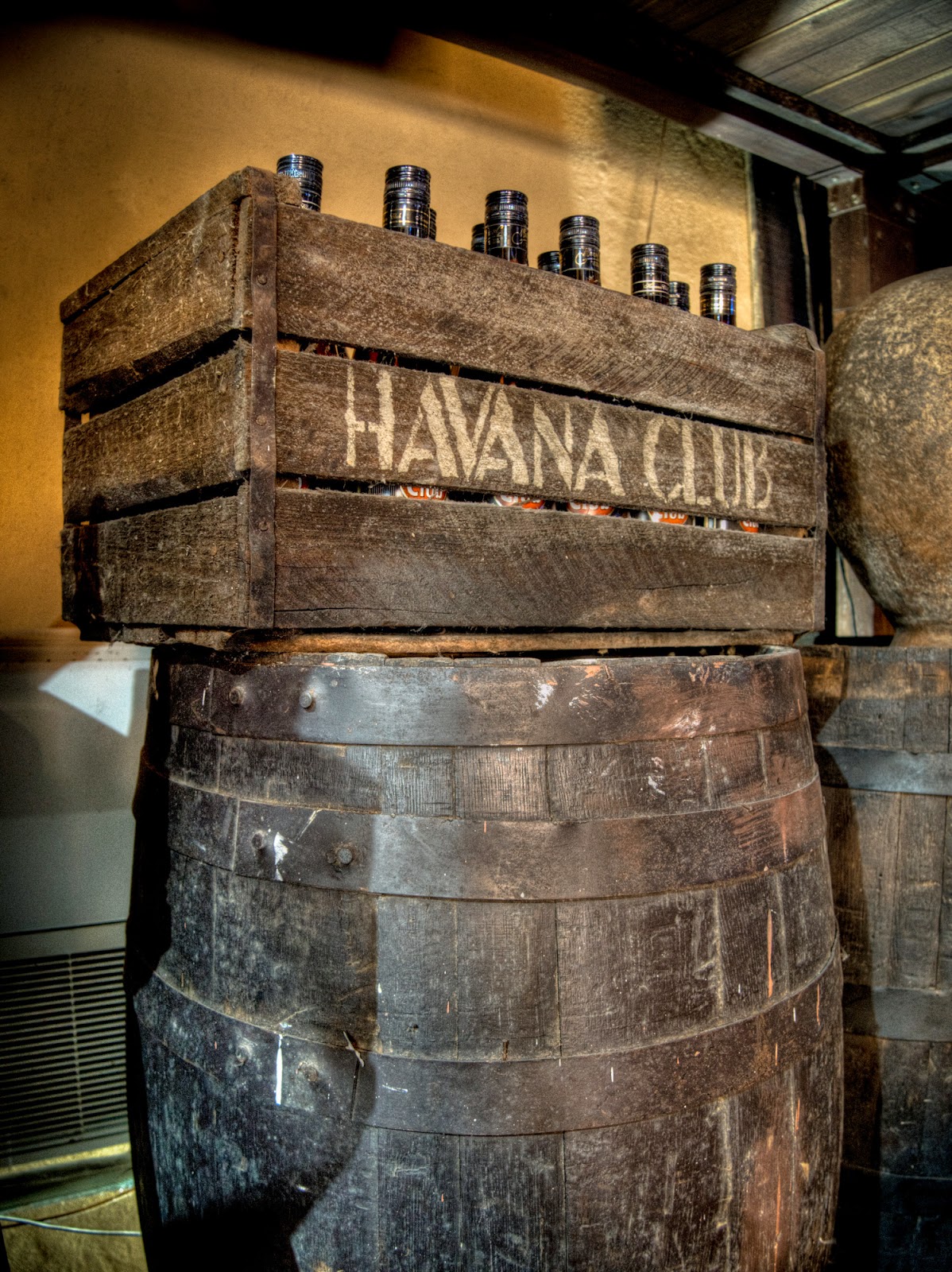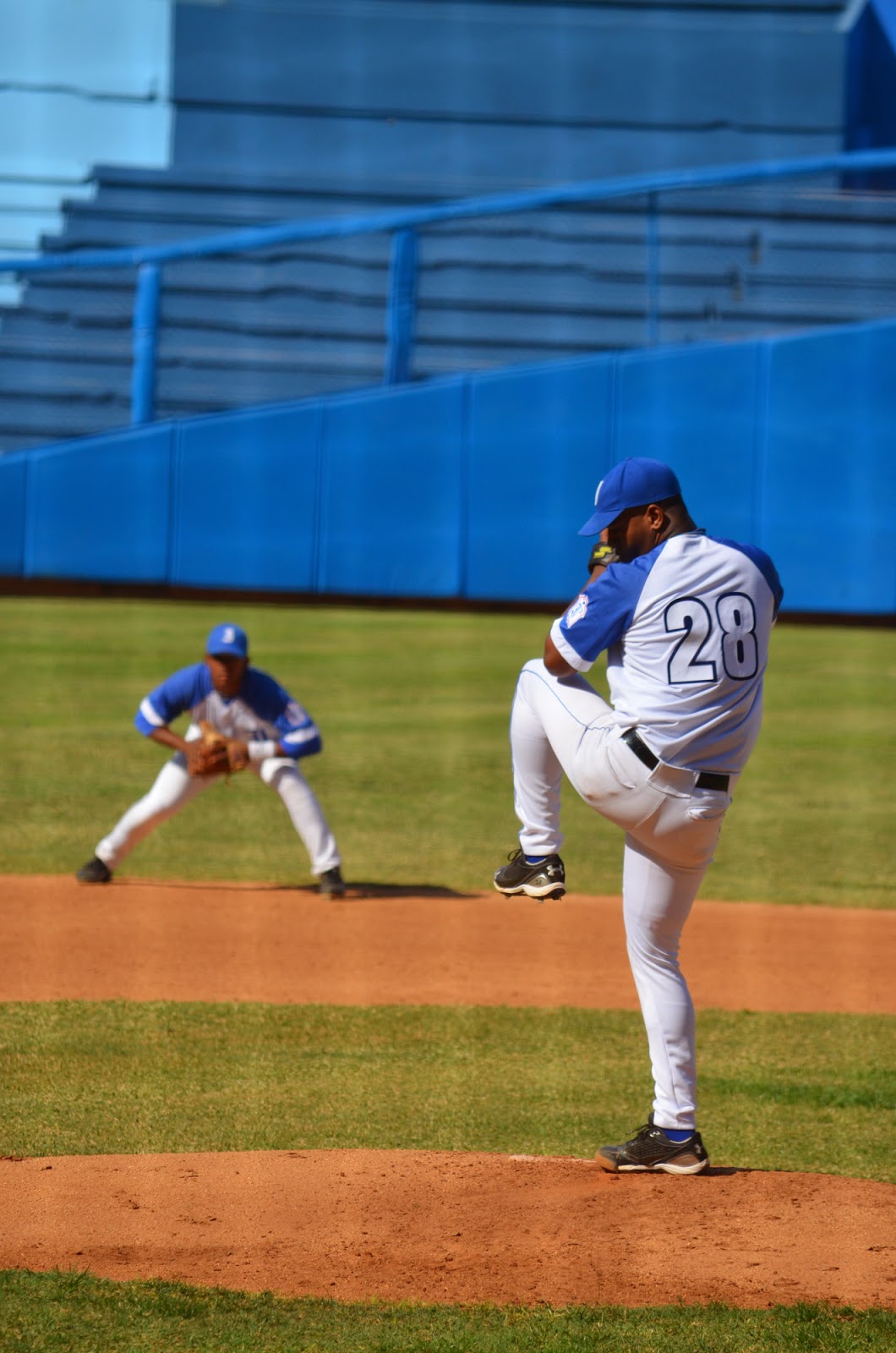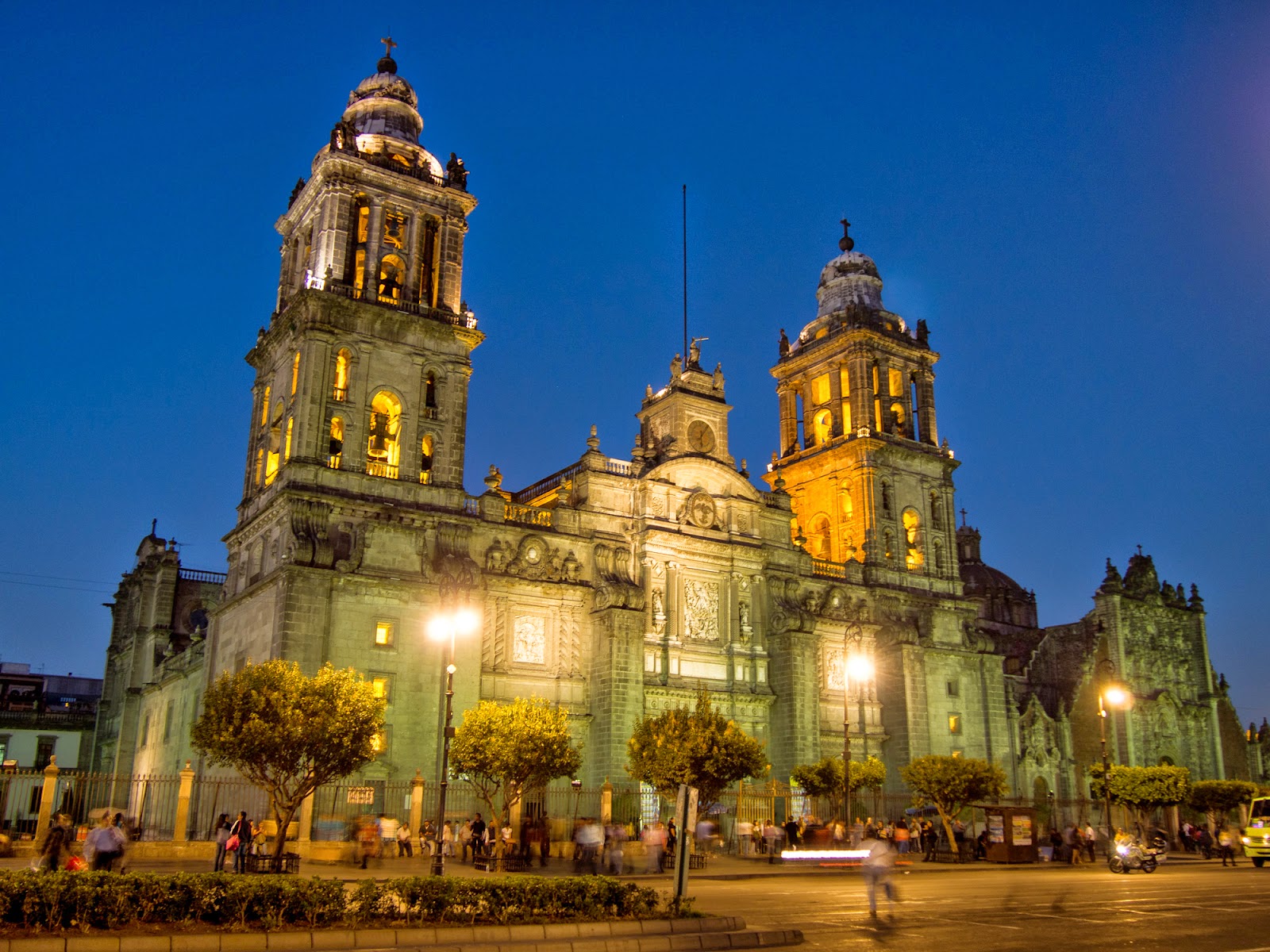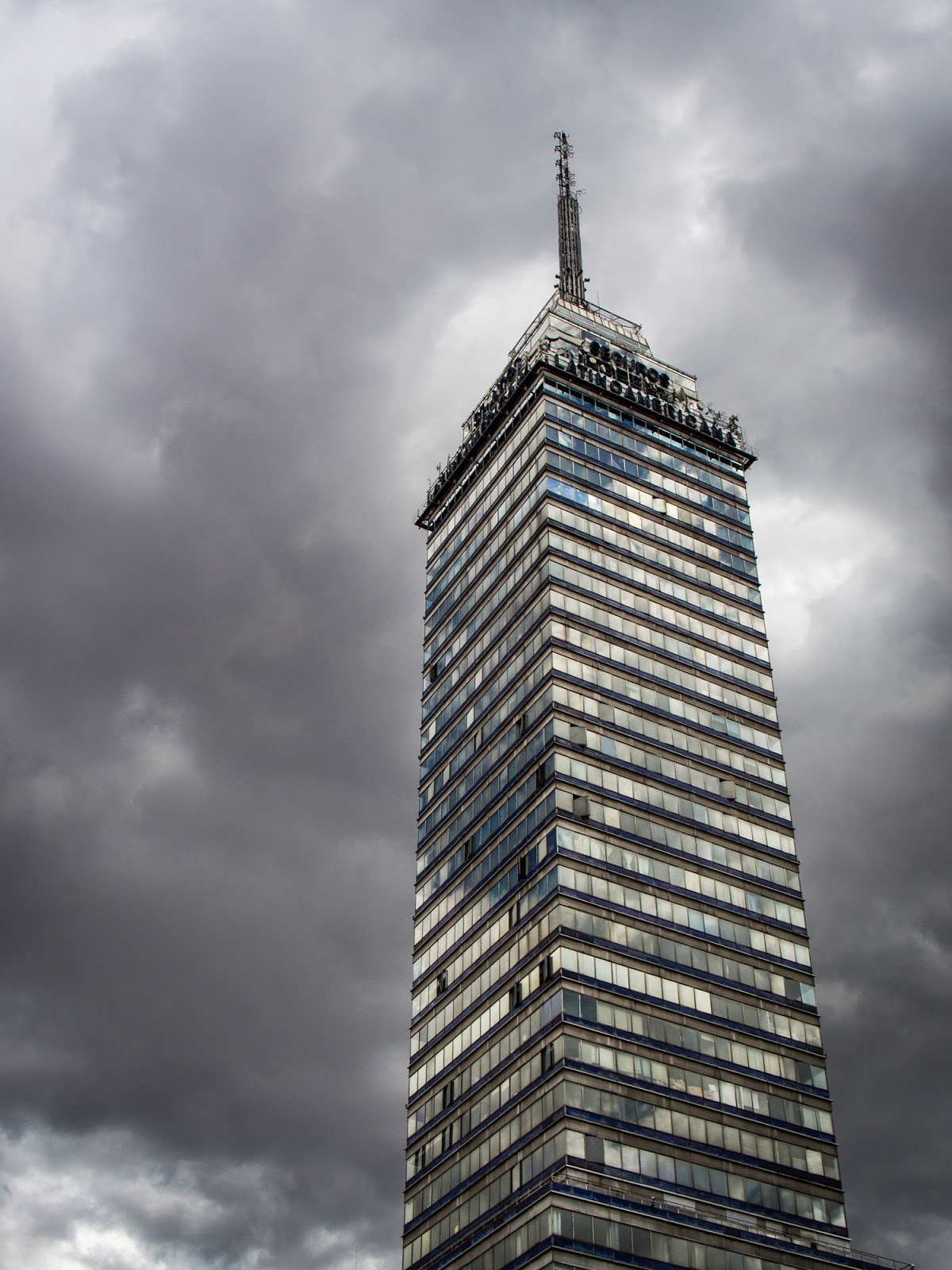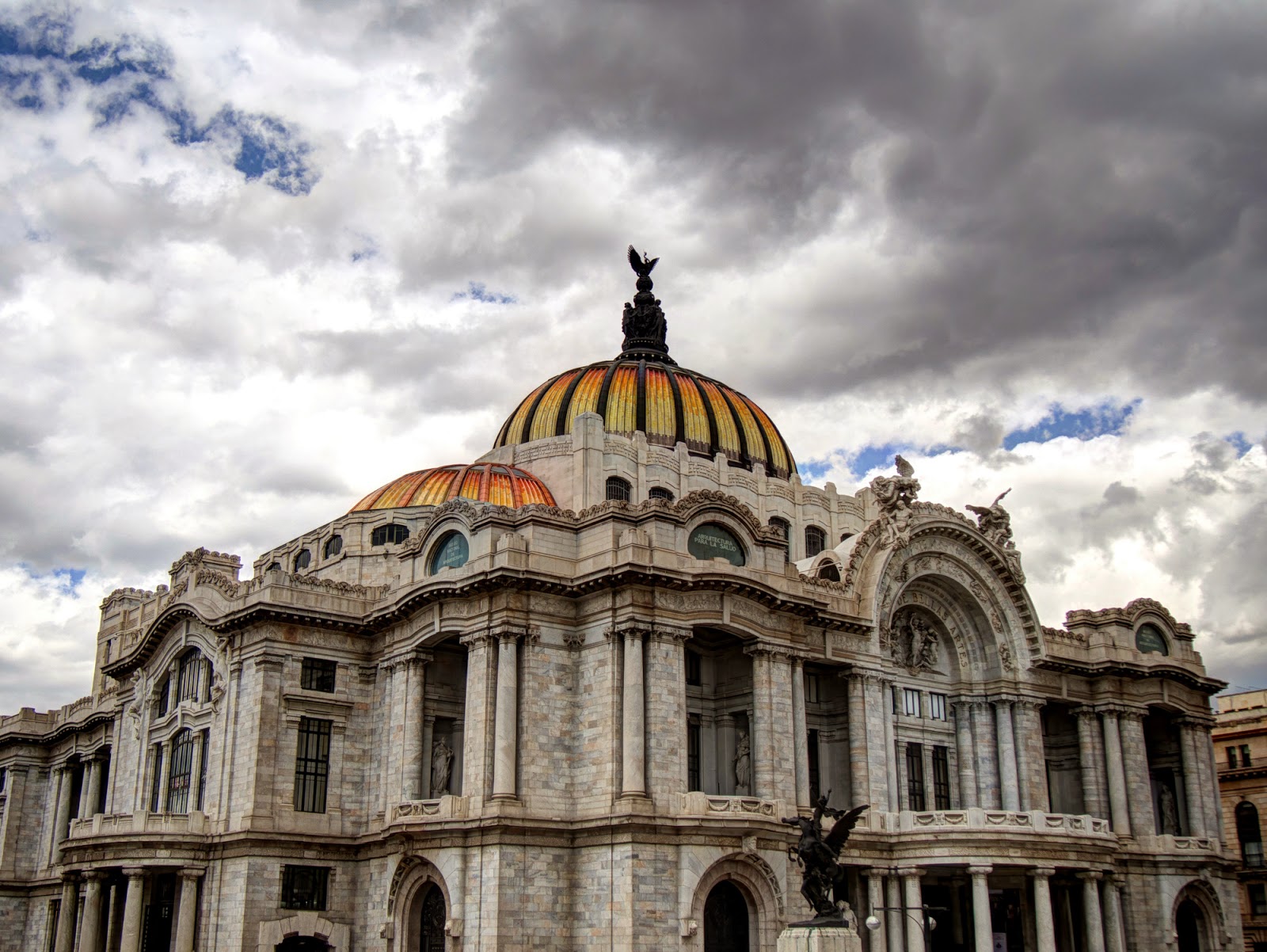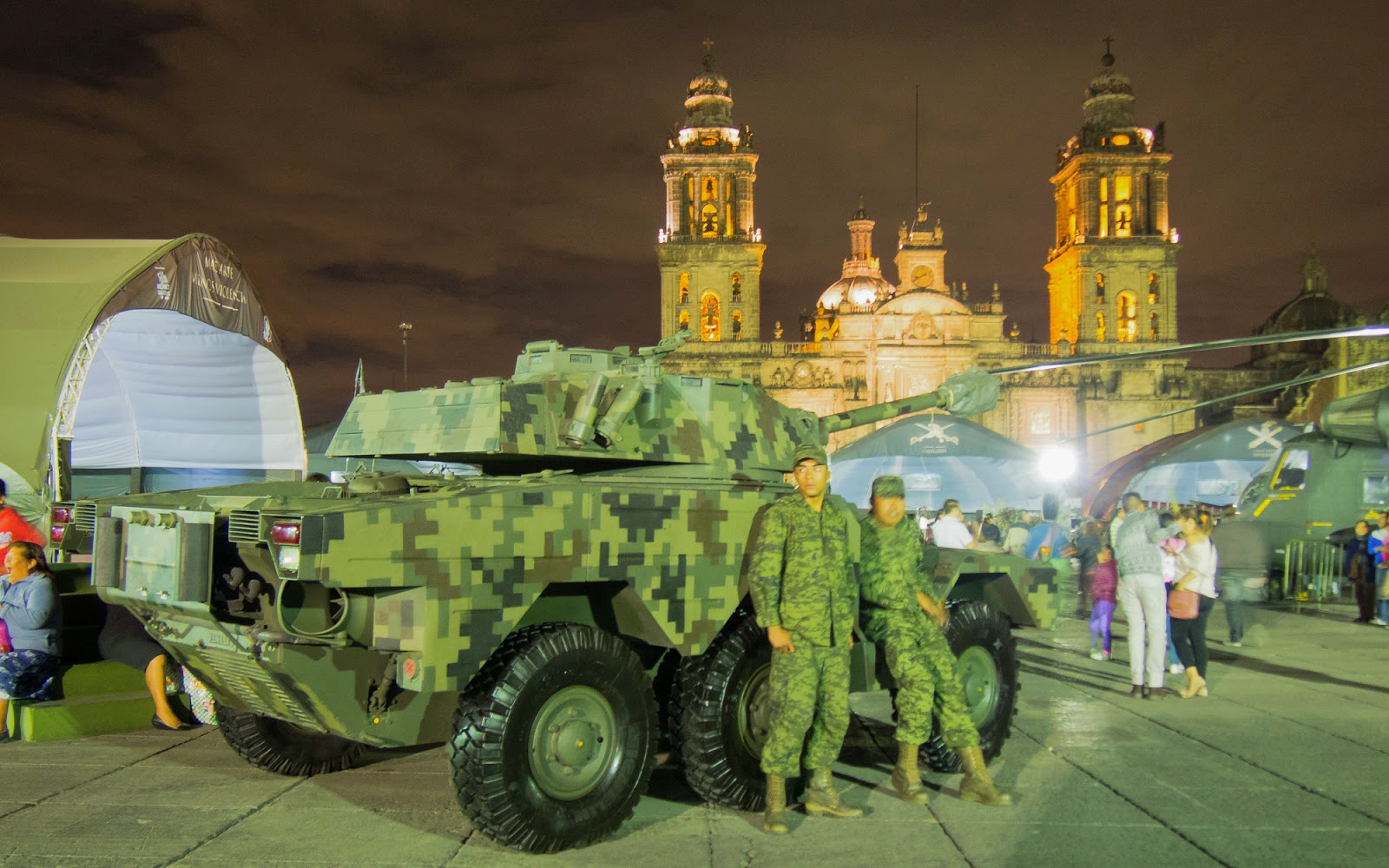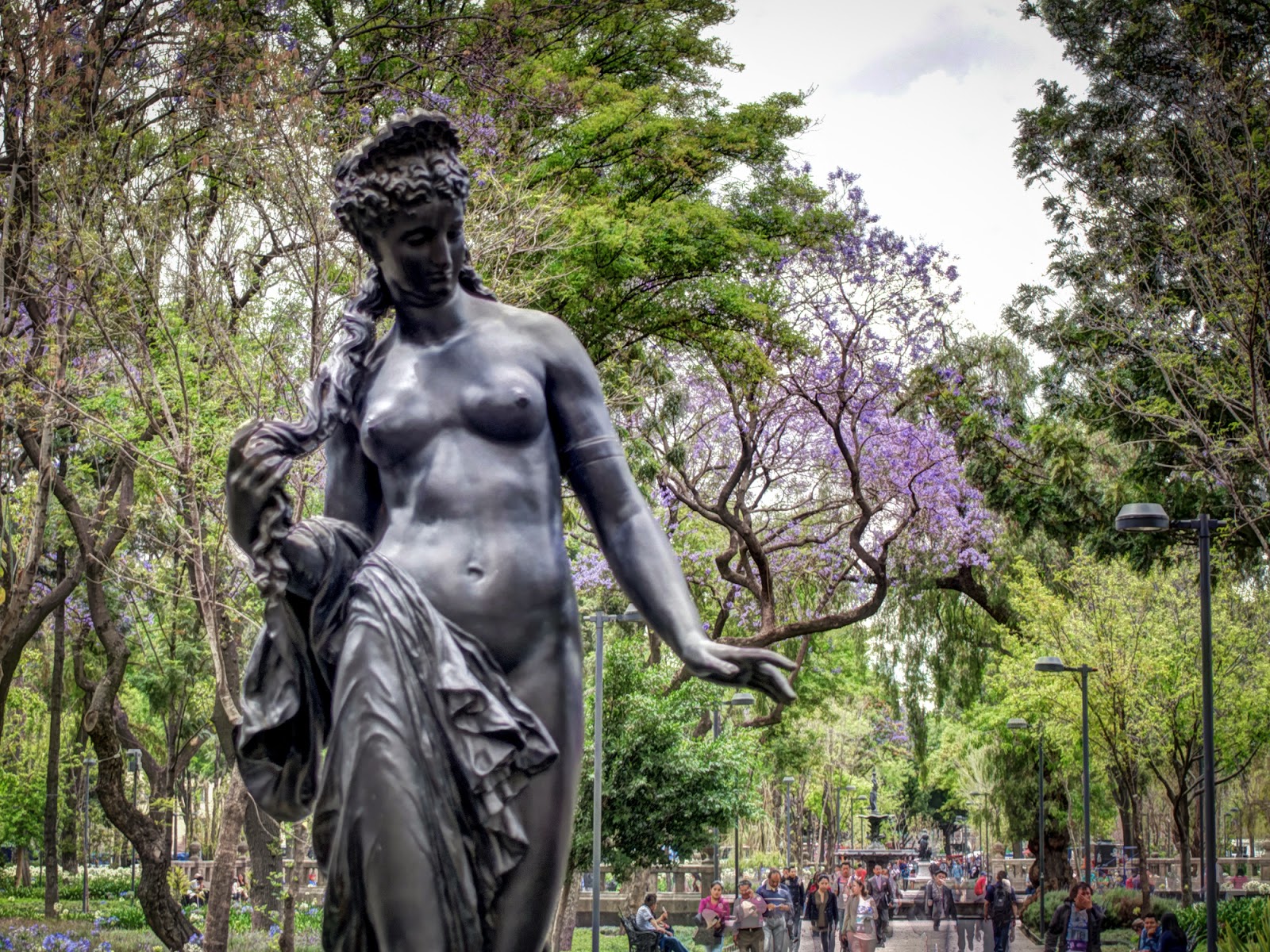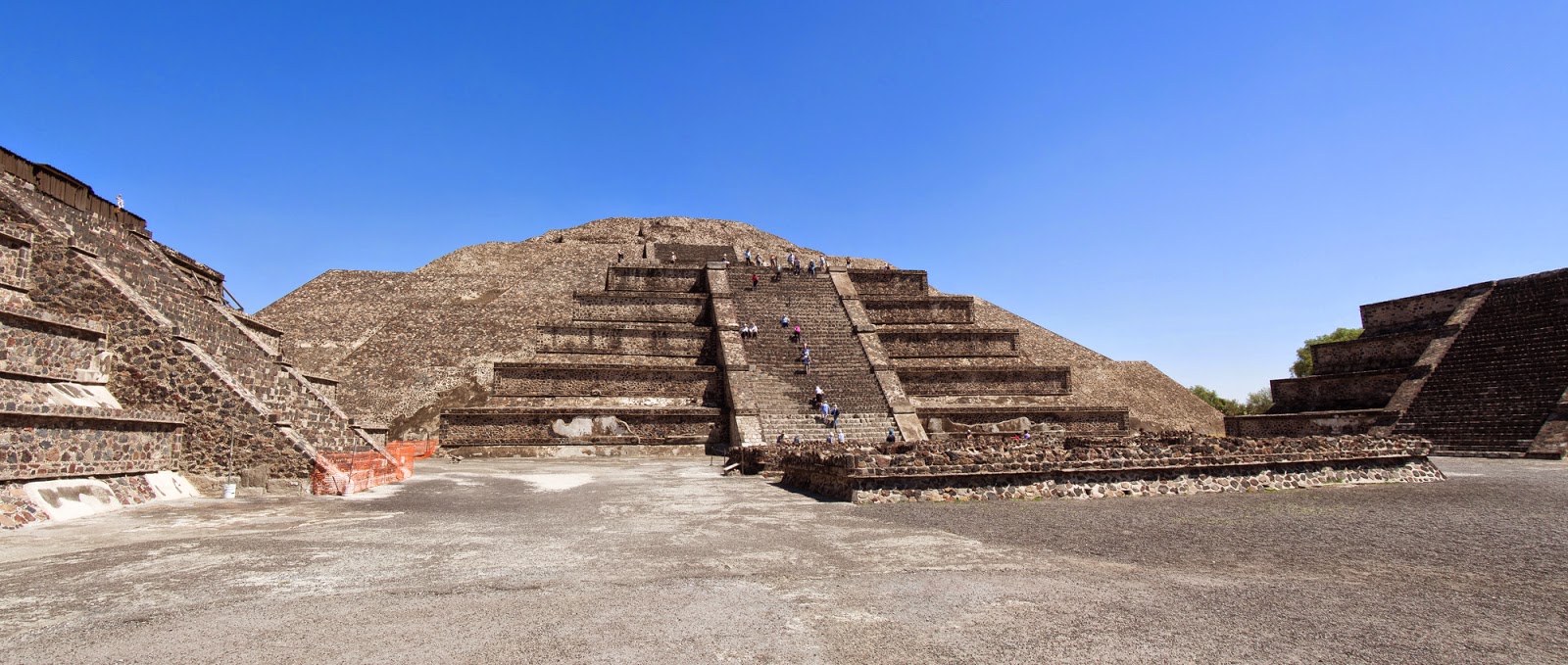Uncertain we were in the right place, we waited underneath a highway overpass where a Trinidad bound bus would hopefully be making a stop. We weren't alone there. There are more people in need of rides in Cuba than there are seats to accommodate them, thanks to an overburdened transit system and a scarcity of working vehicles. This leaves Cubans relying a great deal on hitchhiking for their commutes. Any driver with a seat is supposed to be obligated to lend a spot to a hitcher, but those hopeful to score a ride will often wave cash around for better assurance. In some areas denser with hitchhikers, government officials in yellow uniforms referred to as Amarillos organize the hitching process, giving higher priority to women, children, doctors, and nurses.
Brian and I enjoyed the idea of hitching as an experience and way to save money, but didn't want to rob a needier local of a seat. Eventually our blue Chinese tourist bus stopped by for us and we were on our way to Trinidad de Cuba.
...until our bus broke down. But not before the entire coach was filled with fumes. After a sweaty while and the driver's fiddling about the engine, a mechanic dropped by and replaced the broken part and we were on our way again.
We stopped for lunch at a tourist oriented rest stop with a mini-zoo featuring a tree full of sleeping jutia, giant tree rats that are eaten in some parts of Cuba.
Trinidad, once we were finally there, proved to be a gorgeous town as dense with music as it is color. Spiraling away from the grand Casa de la Musica next to the town square is a great variety of excellent venues in which to enjoy live salsa music and cocktails. Every night, I believe, ended with cigars, mojitos, and bar hopping based on what our ears caught wafting out of various clubs as we strolled around. We carefully resolved that the specific combination of rum, tobacco, and salsa music was a formidable one, and that we could never tire of it. If a spot was particularly bumping, the sparse amount of space in front of the band would fill with whirling salsa dancers. We made friends with a shrunkenly old black salsa genius with a permanent smile that would grab a the hand of a different young lady each song, and regardless of her skill level, make her look marvelous on the floor. He'd even take ladies right out of the arms of their partners, and he was so charming there was clearly no point in resisting him.
During the day, every ninth corner and doorstep or so was ornamented with a dapper as heck old Cubano merely minding his cigar and looking awesome. I think I want to become a Cuban when I reach my senior years.
We found ourselves frequenting a brand new creperie that served the best piña coladas in town – right out of the pineapple. I rarely stick around in one place when I'm traveling to be recognized by locals, but our piña colada chica quickly recognized us as good tippers and would cheer “papi!” when she saw me coming. I threw in an extra buck on my last night and in turn she ran kisses up my arm. We met the proprietor and were shocked to discover he was an Italian immigrant. Cuba is definitely transitioning into a more open version of itself, even if only incrementally; with great regularity we found the information we would digest on line to be outdated, even when published recently.
I told the owner of the creperie that we wanted to become the kings of salsa dancing and he gave us the number of a friend that took us back to her place for private lessons. I realized our aspirations weren't going to be realized in a mere couple of hours and resolved to take lessons each day after Brian left and I would be then doing Cuba solo.
At the bottom of the great steps that led to the Casa de la Musica, we bumped into a couple of Dutch girls we gave a lift to in Las Terrazas, and then took them on an impromptu tour of Trinidad's night life – because we are such experts. The night ended in a cave on the hill behind the city that hosted a nightclub popular with the younger locals. We danced ourselves sweaty to Latin top 40 hits until the lights were turned on at three in the morning.
Trinidad, we read, has access to the finest beaches you can find outside of a resort in Cuba. The four of us rented bikes and spent a great afternoon of snorkeling and beach side mojitos. Brian had a nervous encounter with a sea snake.
We stayed with a Jorge that was pretty charming but very aggressive about pushing his tours. We let him talk us into scuba diving when we found out it would only be $25 a dive.
The dive instructor has no hair save for a mustache and a manicured tuft at the tip of his forehead, a concave chest, and would consider it criminally neglectful to drive by a young woman without giving her an attentive honk from the car horn. After a brief fitting and briefer tutorial on how one scubas, we were off and then under the turquoise blue water.
The deceptive curtain of reflective blue on the water's surface hides a different world entirely. Right away I felt like I was exploring a world more exotic and interesting than the surface of Mars. The white sand that flows from the coast becomes incrementally taken over by coral – first in pocketed islands but eventually becomes all encompassing. Multicolored fingers, fans, tentacles, tubes, lilies, and large bulbous brains define the landscape and are further populated by darting fish that are even more colorful still.
The complex textures and dazzling colors fill each part of your mask and create a powerful contrast when you feel inspired to turn your head up and look at the glassy pane that separates the worlds of water and air, and is so familiar from the other side. Looking up, the mask is filled only with blue save for the distorted rays and ripples of sunlight or maybe a jelly fish pulsing gently, riding the rhythms of the ocean, delicate and dangerous at the same time. Farther yet, the contours of the ocean floor grow more complex with great rocks and then deep crevasses, creating underwater canyons that eventually yield to sheer cliff faces overlooking a place where the water becomes somehow purple and then black. Every inch of the canyons is covered in coral and on our second dive we descended into one of these great cracks in the Earth.
It was thrilling to be entirely encompassed in this very organic and alien feeling world. The experience is simultaneous serene in the utmost way and, even still, full of danger. Every meter of depth amplifies the potential for harm and Brian and there were without experience, navigating narrow passes that tugged at our gear and housed deadly lion fish close enough to grasp. It felt like perhaps something we shouldn't be doing in a country where we don't even have an embassy, and yet it felt precisely like the kind of thing we should have been doing.
Brian had his flight to catch nearly a week before my own, but I had to return to this beautiful place. I was taken back to that cliff's edge and this time we descended into it. By the time we were 25 meters deep, fish could no longer be seen. It was just a wall of coral on one side, an iridescent wall of purple on the other, and us in between. In this colorful space devoid of sound and fish I lost all sense of proportion and felt rather more like a single cell organism floating around a microscope slide than a novice diver in foreign waters.
On the return, passing long trumpet fish and leering moray eels, the landscape gradually transformed back to the familiar forms that seem actually plausible, and there were crabs dancing on the rocks above the water break to celebrate our return. The instructor pressed me against the rocks with a degree of alarm and explained, “uno momento; there are cops on the beach,” and then I realized why those dives were so affordable. Back on the sand, I left my unlicensed dive instructor a tip, enjoyed a cocktail with a girl in the London music biz, and then headed back to Trinidad in a sky blue Chevy.
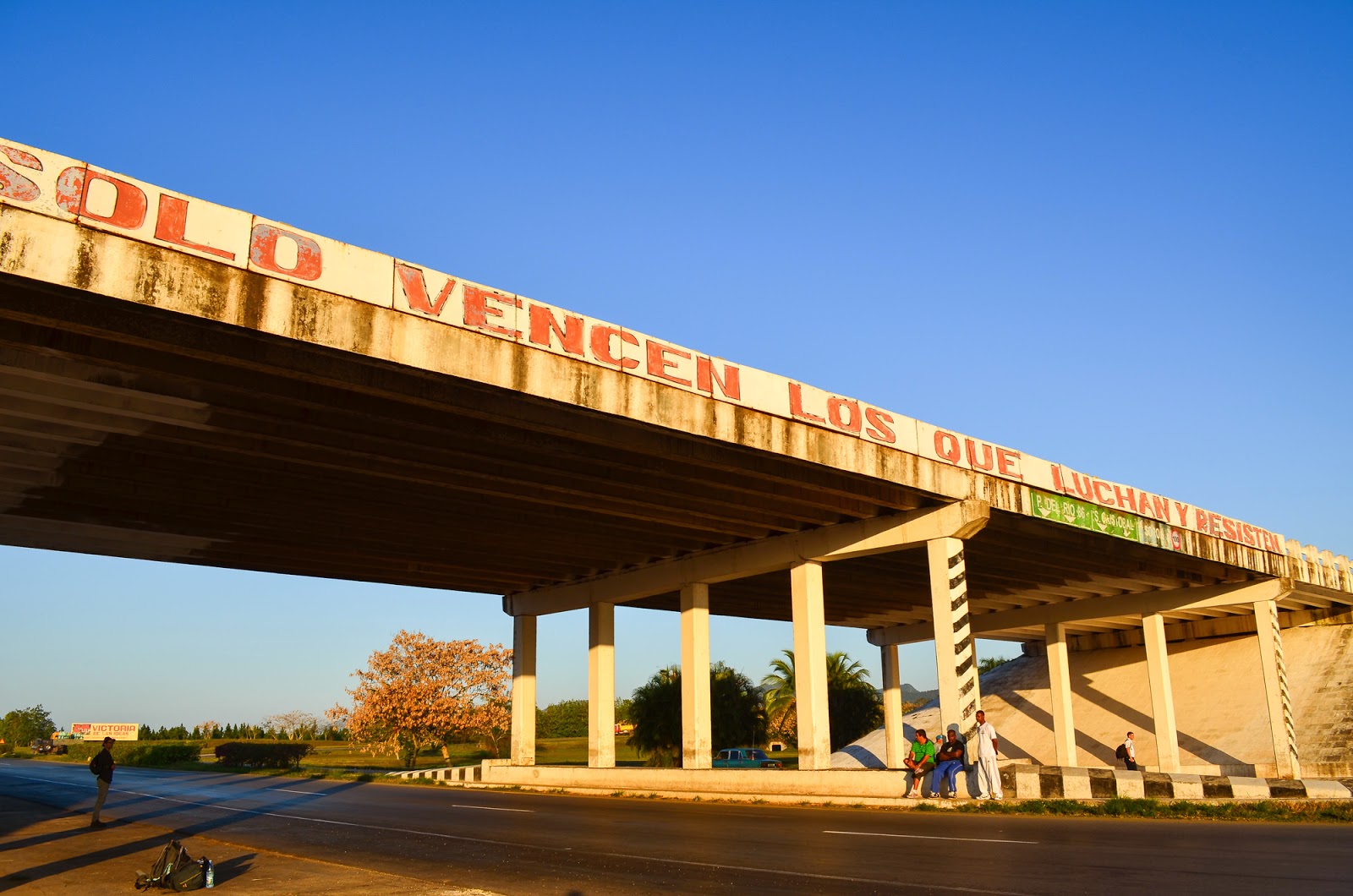 |
| Photo by Brian Linzmeier |
Brian and I enjoyed the idea of hitching as an experience and way to save money, but didn't want to rob a needier local of a seat. Eventually our blue Chinese tourist bus stopped by for us and we were on our way to Trinidad de Cuba.
...until our bus broke down. But not before the entire coach was filled with fumes. After a sweaty while and the driver's fiddling about the engine, a mechanic dropped by and replaced the broken part and we were on our way again.
We stopped for lunch at a tourist oriented rest stop with a mini-zoo featuring a tree full of sleeping jutia, giant tree rats that are eaten in some parts of Cuba.
Trinidad, once we were finally there, proved to be a gorgeous town as dense with music as it is color. Spiraling away from the grand Casa de la Musica next to the town square is a great variety of excellent venues in which to enjoy live salsa music and cocktails. Every night, I believe, ended with cigars, mojitos, and bar hopping based on what our ears caught wafting out of various clubs as we strolled around. We carefully resolved that the specific combination of rum, tobacco, and salsa music was a formidable one, and that we could never tire of it. If a spot was particularly bumping, the sparse amount of space in front of the band would fill with whirling salsa dancers. We made friends with a shrunkenly old black salsa genius with a permanent smile that would grab a the hand of a different young lady each song, and regardless of her skill level, make her look marvelous on the floor. He'd even take ladies right out of the arms of their partners, and he was so charming there was clearly no point in resisting him.
During the day, every ninth corner and doorstep or so was ornamented with a dapper as heck old Cubano merely minding his cigar and looking awesome. I think I want to become a Cuban when I reach my senior years.
We found ourselves frequenting a brand new creperie that served the best piña coladas in town – right out of the pineapple. I rarely stick around in one place when I'm traveling to be recognized by locals, but our piña colada chica quickly recognized us as good tippers and would cheer “papi!” when she saw me coming. I threw in an extra buck on my last night and in turn she ran kisses up my arm. We met the proprietor and were shocked to discover he was an Italian immigrant. Cuba is definitely transitioning into a more open version of itself, even if only incrementally; with great regularity we found the information we would digest on line to be outdated, even when published recently.
I told the owner of the creperie that we wanted to become the kings of salsa dancing and he gave us the number of a friend that took us back to her place for private lessons. I realized our aspirations weren't going to be realized in a mere couple of hours and resolved to take lessons each day after Brian left and I would be then doing Cuba solo.
At the bottom of the great steps that led to the Casa de la Musica, we bumped into a couple of Dutch girls we gave a lift to in Las Terrazas, and then took them on an impromptu tour of Trinidad's night life – because we are such experts. The night ended in a cave on the hill behind the city that hosted a nightclub popular with the younger locals. We danced ourselves sweaty to Latin top 40 hits until the lights were turned on at three in the morning.
Trinidad, we read, has access to the finest beaches you can find outside of a resort in Cuba. The four of us rented bikes and spent a great afternoon of snorkeling and beach side mojitos. Brian had a nervous encounter with a sea snake.
We stayed with a Jorge that was pretty charming but very aggressive about pushing his tours. We let him talk us into scuba diving when we found out it would only be $25 a dive.
The dive instructor has no hair save for a mustache and a manicured tuft at the tip of his forehead, a concave chest, and would consider it criminally neglectful to drive by a young woman without giving her an attentive honk from the car horn. After a brief fitting and briefer tutorial on how one scubas, we were off and then under the turquoise blue water.
The deceptive curtain of reflective blue on the water's surface hides a different world entirely. Right away I felt like I was exploring a world more exotic and interesting than the surface of Mars. The white sand that flows from the coast becomes incrementally taken over by coral – first in pocketed islands but eventually becomes all encompassing. Multicolored fingers, fans, tentacles, tubes, lilies, and large bulbous brains define the landscape and are further populated by darting fish that are even more colorful still.
The complex textures and dazzling colors fill each part of your mask and create a powerful contrast when you feel inspired to turn your head up and look at the glassy pane that separates the worlds of water and air, and is so familiar from the other side. Looking up, the mask is filled only with blue save for the distorted rays and ripples of sunlight or maybe a jelly fish pulsing gently, riding the rhythms of the ocean, delicate and dangerous at the same time. Farther yet, the contours of the ocean floor grow more complex with great rocks and then deep crevasses, creating underwater canyons that eventually yield to sheer cliff faces overlooking a place where the water becomes somehow purple and then black. Every inch of the canyons is covered in coral and on our second dive we descended into one of these great cracks in the Earth.
It was thrilling to be entirely encompassed in this very organic and alien feeling world. The experience is simultaneous serene in the utmost way and, even still, full of danger. Every meter of depth amplifies the potential for harm and Brian and there were without experience, navigating narrow passes that tugged at our gear and housed deadly lion fish close enough to grasp. It felt like perhaps something we shouldn't be doing in a country where we don't even have an embassy, and yet it felt precisely like the kind of thing we should have been doing.
Brian had his flight to catch nearly a week before my own, but I had to return to this beautiful place. I was taken back to that cliff's edge and this time we descended into it. By the time we were 25 meters deep, fish could no longer be seen. It was just a wall of coral on one side, an iridescent wall of purple on the other, and us in between. In this colorful space devoid of sound and fish I lost all sense of proportion and felt rather more like a single cell organism floating around a microscope slide than a novice diver in foreign waters.
On the return, passing long trumpet fish and leering moray eels, the landscape gradually transformed back to the familiar forms that seem actually plausible, and there were crabs dancing on the rocks above the water break to celebrate our return. The instructor pressed me against the rocks with a degree of alarm and explained, “uno momento; there are cops on the beach,” and then I realized why those dives were so affordable. Back on the sand, I left my unlicensed dive instructor a tip, enjoyed a cocktail with a girl in the London music biz, and then headed back to Trinidad in a sky blue Chevy.
